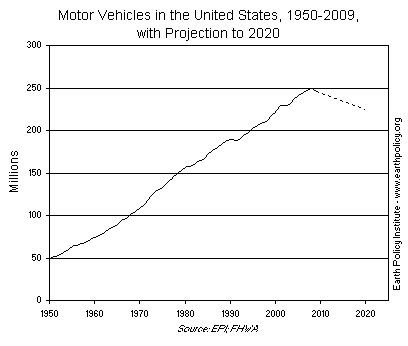At the recent Sustainable Brands 2013 conference, I was able to speak with John Viera, Ford Motor Company’s Global Director of Sustainability. It has been clear for some time now that Ford is clearly on a winning path with innovative design translating into increased sales. At last count, sales were up 13% in June compared to the same month a year ago. Sales of
mobility
 The car company is dead, long live the car company!
The car company is dead, long live the car company!
No, I’m not trying to pour cold water on the notion of the “rebirth” of Detroit, as effectively marketed by Chrysler and Clint Eastwood in the recent Super Bowl ad. Chrysler, Ford and GM have all done impressive phoenix impersonations, arising from the ashes of the
 Cars promise mobility, and in a largely rural setting they provide it. But in an urbanizing world, where more than half of us live in cities, there is an inherent conflict between the automobile and the city. After a point, as their numbers multiply, automobiles provide not mobility but immobility, as well as increased air pollution and the health problems that come with it. Urban transport systems based on a combination of rail lines, bus lines, bicycle pathways, and pedestrian walkways offer the best of all possible worlds in providing mobility, low-cost transportation, and a healthy urban environment.
Cars promise mobility, and in a largely rural setting they provide it. But in an urbanizing world, where more than half of us live in cities, there is an inherent conflict between the automobile and the city. After a point, as their numbers multiply, automobiles provide not mobility but immobility, as well as increased air pollution and the health problems that come with it. Urban transport systems based on a combination of rail lines, bus lines, bicycle pathways, and pedestrian walkways offer the best of all possible worlds in providing mobility, low-cost transportation, and a healthy urban environment.
Some of the most innovative public transportation systems, those that shift huge numbers of people from cars into buses, have been developed in Curitiba, Brazil, and Bogotá, Colombia. The success of Bogotá’s Bus Rapid Transit (BRT) system, TransMilenio, which uses special express lanes to move people quickly through the city, is being replicated not only in six other Colombian cities but in scores elsewhere too, including Mexico City, São Paulo, Hanoi, Seoul, Istanbul, and Quito. By 2012, Mexico City plans to have 10 BRT lines in place.
Between 1950 and 2008 more cars were added to our roads virtually every year as the total fleet expanded steadily from 49 million to 250 million vehicles. In 2009, however, 14 million cars were scrapped while only 10 million cars were sold, shrinking the fleet by 4 million vehicles, or nearly 2 percent. With record numbers of cars set to reach retirement age between now and 2020, the fleet could shrink by some 10 percent, dropping from the all-time high of 250 million in 2008 to 225 million in 2020.
The United States, with 246 million motor vehicles and 209 million licensed drivers, is facing market saturation. With 5 vehicles for every 4 drivers, the 4-million-vehicle contraction in the U.S. fleet in 2009 does not come as a great surprise. In a largely rural society, more cars provided mobility, but in a society that is now over 80 percent urban, more cars provide immobility.
The first stop on the international showcase of high speed rail that I am writing for CleanTechies, will be in Germany. As much as I try to avoid writing in first-person narrative, this topic is quite close to my heart as Germany (where I lived for most of 2002-2003) is where my eyes were opened to how great public transportation can be and how it’s presence or absence severely affects quality of life.
The calamitous state of transportation in the US became apparent when I returned to my old Pennsylvanian home. Being thrust back into the car-dependent nightmare is still the source of much of my angst to this day.
Deutsch: Durch Erfahrung wird man klug.
English: Through experience man becomes clever.
The first series of this column was written on high speed rail in America. With an introduction to all the nation’s proposed corridors covered, this series will focus on the state of high speed rail around the world. An examination of already established high speed networks in industrialized countries and growing networks in developing countries will be compared and contrasted to what is being done (or just talked about then postponed) around the US. The purpose of this series is to highlight how far America is falling behind the rest of the world in giving its citizens mobility.
These articles are meant as alarm bells to policy makers in Washington, warnings that the current state of rail is both a national embarrassment and a detriment to the quality of life of its citizens.
